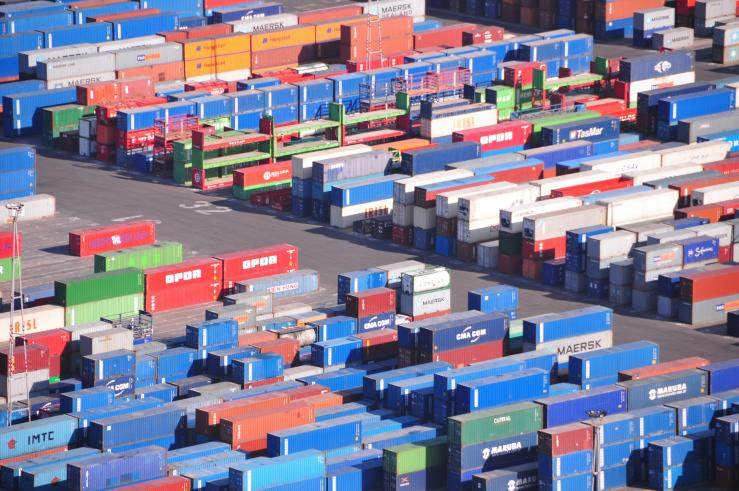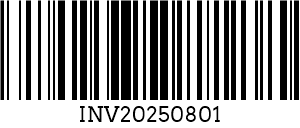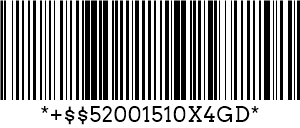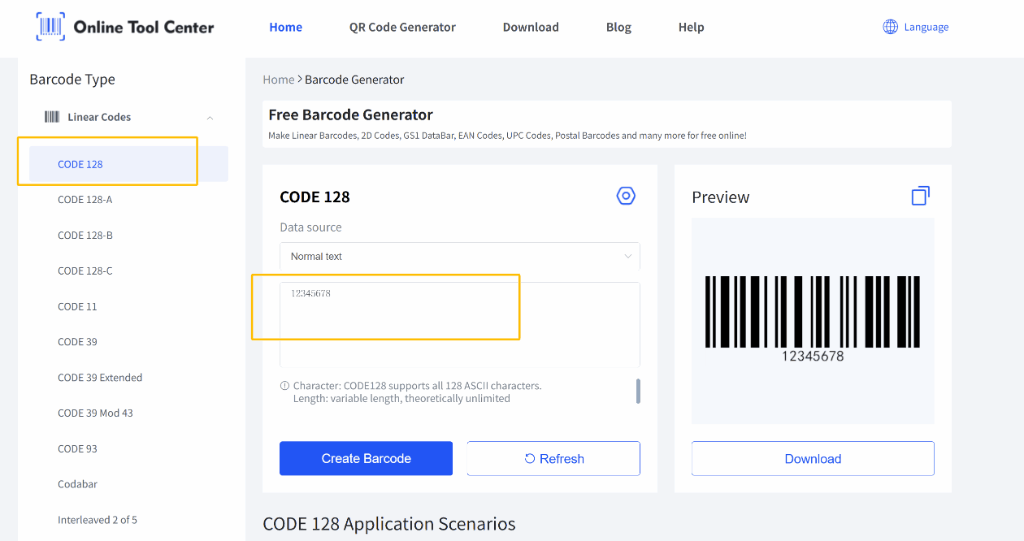

For barcodes that are both compact and easy to read, Code 128 is one of the best. It's the go-to choice across industries like logistics, retail, healthcare, and inventory management. But if you're just getting started, you may be wondering—what does a Code 128 barcode actually look like? And how can you create or print one that works flawlessly?
This guide has everything you need—real Code 128 barcode examples plus a smart tool to help you generate GS1, HIBC, and custom formats quickly.


Code 128 is a high-density, variable-length linear barcode symbology that can encode the full ASCII character set—including letters, numbers, symbols, and even control characters.
It was originally developed by Computer Identics in 1981, with the goal of improving data accuracy and reducing barcode length for complex datasets. Since then, it has become a go-to standard across industries that need reliable, space-efficient, and flexible encoding for both numbers and text.
What sets Code 128 apart is its structural flexibility. It doesn't enforce a fixed data format, so it works great for everything from simple product SKUs to complex, serialized logistics codes.
It's also highly adaptable across industries. Formats like GS1-128, HIBC, and ISBT 128 all use the basic Code 128 structure but add their own rules for things like expiration dates, product IDs, or patient info. That's why you'll see Code 128 used in retail tags, hospital labels, and global shipping systems alike.
Another big advantage? It keeps long alphanumeric strings compact. Where older symbologies like Code 39 might stretch across half a label, Code 128 keeps things tight without sacrificing scan reliability.
On top of that, Code 128 is supported by nearly all modern barcode scanners, printers, and labeling systems—so it's easy to implement, no matter what tools you're using. With all these advantages, it's no surprise that Code 128 has become a trusted choice for today's supply chains, inventory systems, and data-driven labeling workflows.
Below are several practical Code 128 barcode examples, representing different types such as GS1, HIBC, and other industry-specific formats.
• Regular Code 128

Description: A basic, high-density barcode using the standard Code 128 format. It supports the full ASCII character set, allowing a mix of letters, numbers, and symbols.
Sample Encoded Data: INV12345, A102B9, #SKU-001
Use Case: Internal inventory labeling, document tracking, serial numbers
Best For: General-purpose use when you need to encode both letters and numbers efficiently in a compact space.
These formats use Code 128 encoding with Application Identifiers (AIs) defined by the GS1 standard. They’re ideal for regulated industries and global trade.
• GS1-128 Barcode (formerly EAN/UCC-128)

Description: A standardized GS1 barcode format that allows multiple AIs—such as GTIN, expiration date, and lot number—to be encoded in a single symbol.
Sample Encoded Data: (01)01234567891231(10)ABC123(15)250930
Use Case: Food traceability, manufacturing control, export compliance
Best For: Complex labels requiring multiple product fields in one barcode.
• GS1-128 Barcode with GTIN / Pallet Unit (AI 01)

Description: A GS1-128 format using Application Identifier (01) to encode a 14-digit Global Trade Item Number for units, cases, or pallets. For example, in shipping, it's used as an SSC to label the whole shipping unit.
Sample Encoded Data: (01)01234567891231
Use Case: Case labeling, warehouse pallet ID, retailer compliance
Best For: Uniquely identifying trade items across supply chains.
• GS1-128 Barcode with Expiration Date (AI 15)

Description: Encodes a product's expiration date in YYMMDD format using AI (15).
Sample Encoded Data: (15)250930
Use Case: Food packaging, pharmaceutical tracking, cold chain management
Best For: Products with limited shelf life that require expiry visibility.
• SSCC-18 Barcode

Description: Encodes AI (00) followed by an 18-digit Serial Shipping Container Code used to track logistics units like pallets and cartons.
Sample Encoded Data: (00)001234560000000186
Use Case: Shipping labels, freight logistics, EDI compliance
Best For: Global logistics operations needing unit-level tracking.
Built on Code 128 but governed by the HIBC standard, these barcodes are widely used in hospitals, labs, and FDA-regulated packaging.
• HIBC LIC Code 128 Primary

Description: The primary HIBC barcode format encoding the manufacturer ID and product catalog number.
Sample Encoded Data: *+A123BJC5D6E72G*
Use Case: Medical devices, surgical tools, hospital inventory
Best For: FDA-compliant labeling of healthcare products.
• HIBC TSH Code 128 (Secondary Data)

Description: Used alongside LIC to add batch number, expiration date, and quantity. Typically scanned second for full data capture.
Sample Encoded Data: *+$$52001510X4GD*
Use Case: Medication tracking, blood product labeling
Best For: Healthcare packaging that requires full traceability and UDI compliance.
In addition to the widely adopted GS1 and HIBC formats, many retailers and logistics providers have developed their own customized versions of Code 128. Such as
These adaptations often follow the same encoding logic but tweak the label layout, font, or data arrangement to suit specific operational needs.
Creating professional Code 128 barcodes—including GS1 and HIBC variants—doesn't have to be rocket science. You might be labeling a few products or printing a single medical tag—either way, the right tool can save you time, cut the stress, and keep costs down.
Our online barcode generator makes it easy to create clean, scannable Code 128 barcodes for shipping labels, pharmaceutical packaging and product SKUs in just a few clicks. No downloads. No registration. No nonsense.
It works seamlessly on both desktop and mobile, so you can create barcodes anytime, anywhere—whether you're at your desk or running around the warehouse with your phone in hand.
Check out our full tutorial on how to generate Code 128 barcodes properly.

No sign-ups, no paywalls, no hidden tricks
Use it on your phone, tablet, laptop, or desktop
Export barcodes as PNG, JPG, or SVG
Adjust barcode height, width, colors, text display, and more
Including GS1 AIs, HIBC standards, and retailer-specific formats
Pro Tip:
Pair your generated barcode with a reliable thermal barcode printer, and always do a quick test scan before mass printing—because even the best barcodes are useless if your scanner can't read them.
Want to try it now? Check out our barcode generator tool and start building your Code 128 labels today.
Our tool lets you generate Code 128, GS1, or HIBC formats in seconds—fully scannable and ready to go.
 Send An Inquiry
Send An Inquiry
Please fill in your name,email and requirement